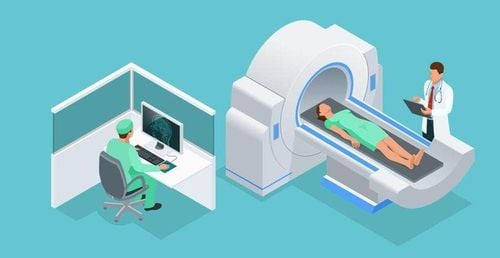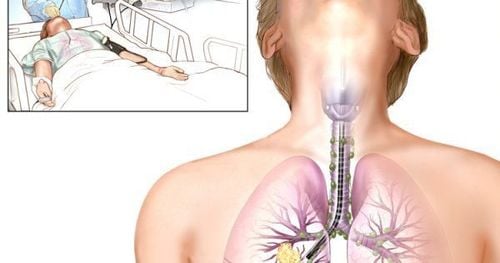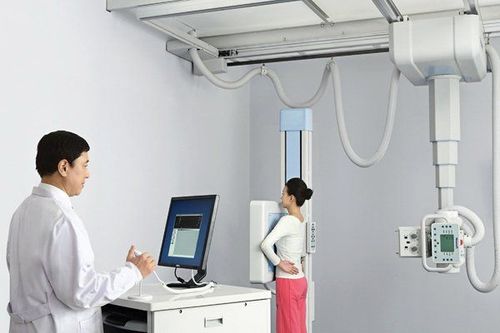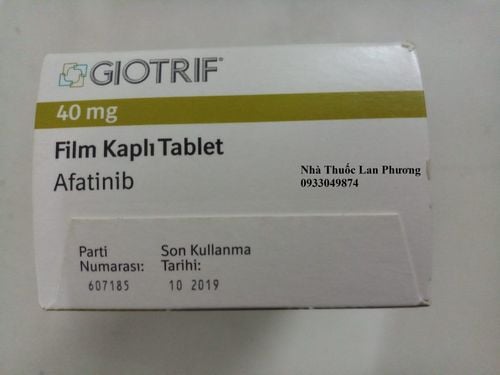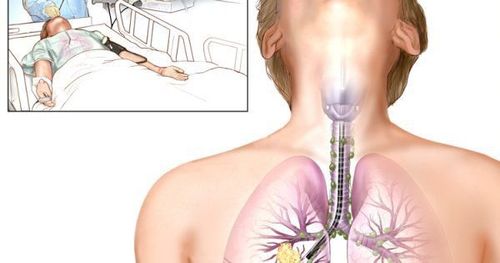This is an automatically translated article.
Posted by Resident Doctor, Master Tran Duc Tuan - Department of Diagnostic Imaging - Vinmec Central Park International General Hospital
Flexible bronchoscopy is a procedure that allows doctors to closely observe the airways, helping to accurately diagnose lung diseases. At the same time, this technique is also used in the treatment of some lung diseases.
1. The concept of flexible bronchoscopy
1.1 What is Bronchoscopy? Bronchoscopy is an endoscopic technique that allows the doctor to see the inside of the airways through the endoscope. The endoscope will be inserted into the airways through the mouth, nose, or tracheostomy. The endoscope is a small tube, one end is attached with a camera and light, making it easy for the doctor to see inside the respiratory tract. The other end of the endoscope has a control handle attached.
Bronchoscopy is being used more and more widely to diagnose diseases related to the respiratory tract. During the procedure, the patient is usually anesthetized or sedated, so there is little pain and discomfort.
Bronchoscopy technique has 2 types: rigid bronchoscope and flexible bronchoscope.
1.2 What is flexible bronchoscopy? This is a bronchoscopy method using a small probe, softer than the hard tube, suitable for cases where it is necessary to diagnose respiratory diseases. The flexible tube is equipped with a light and camera, which can be inserted deep into the bronchi, easily accessing the position to be diagnosed and helping the patient feel comfortable, the time to perform endoscopy is faster than bronchoscopy. hard.
Flexible bronchoscopy also allows the doctor to take samples of tissue, fluid, or cells from the lung. In addition, this procedure is also used in the treatment of certain lung diseases. The procedure takes only about 15 minutes. Therefore, this technique is being widely used in endoscopic diagnosis of respiratory diseases.
Bronchoscopy results are normal if the large airways leading to the lungs and bronchi in the lungs are normal, without thick secretions or foreign growths. Results are abnormal if there are objects, thick secretions, or growths blocking the airways, or if tissue samples are obtained for infection or lung disease such as tuberculosis or lung cancer.
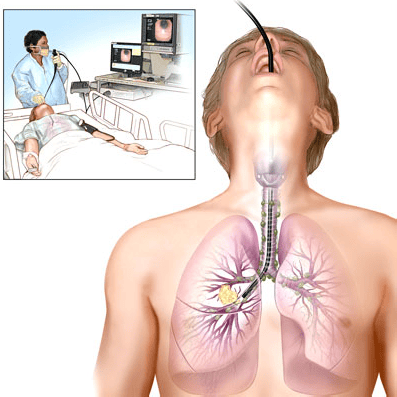
2. Indications for flexible bronchoscopy
Patients are often assigned to perform bronchoscopy with a flexible tube after being examined by a doctor and detecting some abnormal signs of the respiratory tract. Indications of the technique are:
Evaluation of malignancies: Diagnosis of tracheobronchial cancer, determination of bronchial cancer stage, post-treatment follow-up for bronchial cancer, assessment of patients with lesions malignancy in the head - neck region, evaluated in case the patient has esophageal cancer; Evaluation of mediastinal mass; Evaluation of infection status: Recurrent or less improved pneumonia, empyema, lung abscess, infection in immunocompromised patients; Other indications: Evaluation of interstitial lung disease, atelectasis, lung tumor, hemoptysis, unexplained persistent cough, chest trauma, aspiration of foreign body, pleural effusion of unknown cause, patient evaluation After lung surgery, locate the endotracheal tube, assess the injury after tracheostomy or intubation, tracheal stenosis, suspected tracheoesophageal or tracheobronchial or pleural fistula, hoarseness due to vocal cord paralysis, prolonged pneumothorax,...
3. Contraindications for flexible bronchoscopy
This technique is contraindicated for the following cases:
Patients with coagulation disorders; Patients with Cardiovascular Disorders: Severe arrhythmia, myocardial infarction, severe heart failure, severe but uncontrolled hypertension, recent onset of angina or unstable angina ; Patients with respiratory failure, chronic obstructive pulmonary disease group D or in severe exacerbation, alveolar dilatation with large fragile air cysts, uncontrolled bronchial asthma, undrained pneumothorax, history of pneumothorax within 1 month; The patient did not cooperate with the procedure.
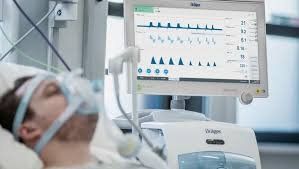
4. Advantages of flexible bronchoscopy technique
Flexible bronchoscopy has the following advantages:
Helps doctors easily observe the respiratory tract to diagnose diseases in the bronchial tree, from the trachea to the small bronchi; The doctor can remove the specimen outside the bronchial wall, in the lung parenchyma, or access to the lesions near the lung margins; Technical implementation time only takes 5-10 minutes; The flexible endoscope is equipped with a camera with a high-resolution screen, true colors and a modern lighting system, helping the doctor to intervene easily even in the most difficult-to-reach places of the airway. ; Allows the doctor to observe and treat the lesions without causing pain and discomfort to the patient; Safe and low risk to the patient. Flexible bronchoscopy is a method of diagnosis and intervention of respiratory diseases that is evaluated as having high accuracy and fast implementation. When indicated to perform this technique, the patient should absolutely coordinate with the doctor's instructions to obtain accurate results and reduce the risk of complications.
At Vinmec International General Hospital, flexible bronchoscopy is performed on modern machinery, this technique does not make patients uncomfortable when conducting endoscopy: Choking, feeling Asphyxiation... Before the procedure, the patient will be anesthetized and carefully controlled the airway to ensure safety and minimize irritation or discomfort for the patient, then the doctor will perform perform endoscopic techniques, remove foreign bodies and then check and control to ensure there are no complications for the patient.
If you have a need for consultation and examination at Vinmec Hospitals under the nationwide health system, please book an appointment on the website for service.
Please dial HOTLINE for more information or register for an appointment HERE. Download MyVinmec app to make appointments faster and to manage your bookings easily.






